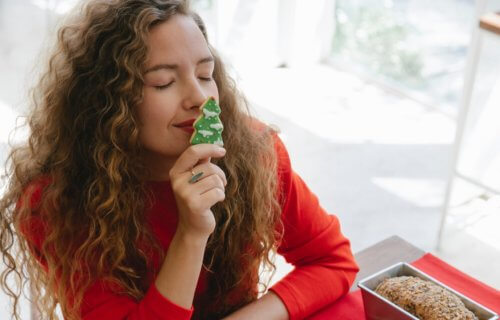New study shows how older individuals were able to recall forgotten memories in great detail when exposed to a smell that reminded them of their youth
LANCASTER, United Kingdom — Human memory is notoriously faulty and tends to fade with time. Fascinating new research, however, suggests enjoying foods from childhood may be an easy way to jumpstart your memory in old age. Scientists at Lancaster University report that when a group of older adults encountered foods and flavors from their youth, they “time traveled” back to the past with enhanced memory recall.
Some of the best memories are often tied to specific foods, tastes, and smells — like the taste of grandma’s apple pie or the smell of a fresh pizza right out of the oven. These sensations have long been known to “jog” the memory in a way that instantly brings people back to moments in time they had long forgotten.
How did scientists capture memorable smells?
In an attempt to better understand this phenomenon, the research team investigated if 3D-printed flavor-based cues would lead to stronger memory recall among a group of older adults. A total of 12 people took part in this project, with 72 memories in all being collected. Half of those memories involved food while the other half did not. Each memory was recalled twice by participants, once with the help of a flavor cue and once without.
These memories, of course, ranged widely. Examples include “barbecued mackerel at a golden wedding” and “eating strawberries in hospital after giving birth.”
Study authors worked with participants to craft individualized “bespoke flavor-based cues.” These 3D-printed flavor-based cues were small, gel-like edible balls “modeled on original food.” The edible balls were “easier to swallow with more intense flavors, without requiring all the ingredients and preparation.”
“Our outcomes indicated that personalized 3D printed flavor-based cues have rich sensorial and emotional qualities supporting strong recollective retrieval, especially when they distinctively match the food in the original experience and prompt emotionally positive self-defining memories,” says study co-author Professor Corina Sas in a university release.
‘I could place myself at the table in the room’
After taking the flavor-based cues, all participants recalled events more vividly. Conversely, they remembered far fewer details during the earlier free recall sessions.
For instance, before taking a flavor cue, one person remembering a Green Thai curry dinner in Cambodia said, “we went into the kitchen area, which was very basic and preparing all sorts of types of green vegetables, which I have no idea what they were, sitting on the floor. And then we would help cook them, stir fry them, and then we would help dish them up…”
After exposure to the 3D printed flavor-based cue of the Green Thai curry, however, that same participant provided a much more detailed description of the memory.
“The chopping noises of cutting up the vegetables, me sitting on the floor cross legged with my friend, chatting together. And then when we went out, put stuff on the tables, the rest of the group coming out and we sit on long tables outside, the front of the school, so it’s outside in the open air to eat.”
Researchers note that a significant portion of the group described the experimental experience as like being “brought back in time.”
“The roast beef and horseradish cue took me back 25 years in one bound …I could place myself at the table in the room …I ate that, and that actually provoked out of all the memories, quite a strong reaction actually. Just suddenly I was back,” the study participants explain.
It appears simply eating the flavor cue was interpreted as a bodily re-enactment of the original event.
“It just kind of triggers a few more sensations. Perhaps when you’re tasting it, you imagine yourself there.”
Could this help people dealing with memory loss?
This work may also be relevant in regard to dementia. Several people testified to the importance of food memories based on their own experiences of caring for their loved ones.
“As soon as she smelled and tasted the food, she would say something like, ‘Oh, this is like old fashioned food. This takes me back’. She felt that it was something that she had had a long time ago,” one person whose mother has Alzheimer’s notes.
Another participant suggested a scrapbook of food memories may be a good idea to help spark better memory recollection in people with dementia.
“The 3D printed flavors cued recollective retrieval, eliciting sensorially rich and strong positive emotional experiences that participants deeply enjoyed,” Professor Sas says.
“Working alongside people to create flavor-based cues highlighted how powerful but under used this connection is. Our design approach helped bridge this gap and showed the potential for future applications to create rich, multi-sensory memory aides,” Dr. Gayler adds.
“We finally have technology that can help re-construct memories using the flavor and scent of different foods in very compact shapes. These are the strongest cues to help us remember,” Dr. Vaiva Kalnikaitė concludes.
The study is published in the journal Human-Computer Interaction.

